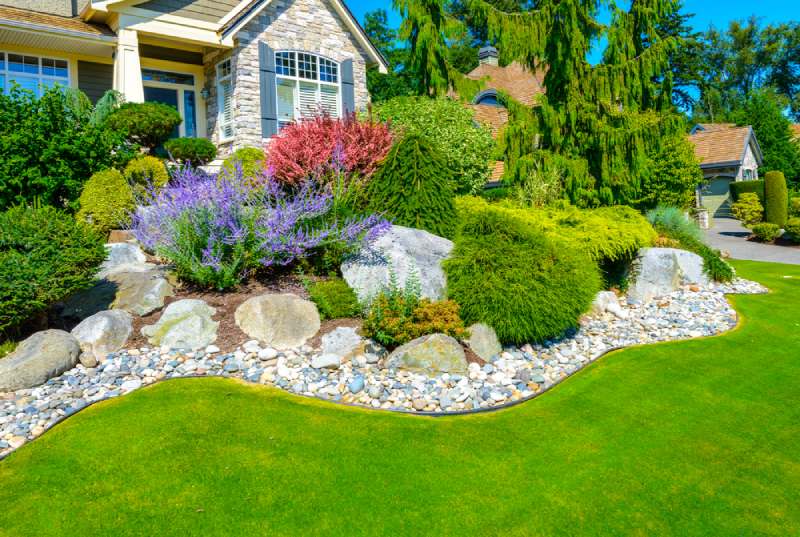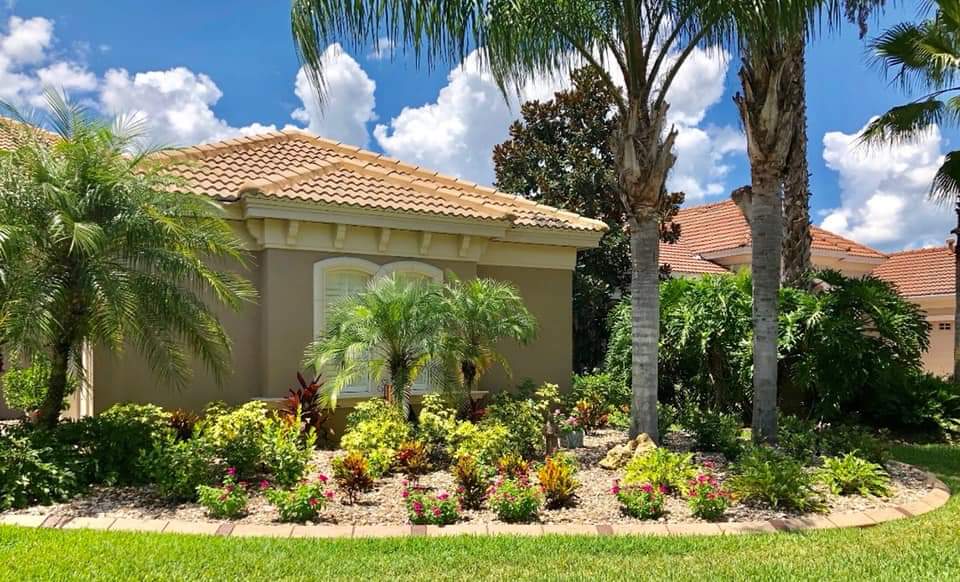Discover the Advantages of Lasting Palm Desert Landscaping Techniques
Discover the Advantages of Lasting Palm Desert Landscaping Techniques
Blog Article
A Comprehensive Overview to Designing and Implementing Effective Landscaping Solutions
The art and scientific research of landscaping expand beyond mere aesthetics; they involve a thoughtful combination of design concepts, ecological stewardship, and functional application. What techniques can one use to make certain these landscapes not only flourish yet likewise grow in consistency with their environments?

Comprehending Landscape Layout Concepts
One may question what fundamental aspects add to reliable landscape design. At its core, effective landscape style pivots on a number of key concepts that direct the arrangement and choice of aspects within a room. These concepts include unity, rhythm, percentage, and equilibrium, each serving to develop an unified outside environment.
Unity describes the natural partnership among various components, making certain that they function together cosmetically and functionally. Equilibrium can be accomplished through symmetrical or unbalanced plans, enabling the landscape to really feel secure and inviting. Percentage includes comprehending the range of aspects in relation to each other and the surrounding atmosphere, advertising visual harmony and comfort.

Examining Your Outdoor Space
Before implementing the concepts of landscape style, a thorough evaluation of your outdoor room is important. This preliminary assessment aids define the scope of your landscaping project and makes sure that your design lines up with the distinct qualities of your home. Begin by analyzing the measurements of your room, taking precise dimensions to understand the available location for various components such as patios, paths, and yards.
Following, observe the existing functions of your landscape, consisting of topography, soil high quality, and drain patterns. These aspects significantly affect plant selection and placement. In addition, evaluate the sunshine exposure throughout different areas throughout the day, as this will influence the types of plants that thrive in your yard.
Take into consideration the microclimates produced by frameworks, trees, and various other obstacles, as they can affect temperature and dampness degrees. Finally, make note of any existing plants or hardscape components that you desire to eliminate or preserve. This comprehensive assessment lays the groundwork for a well-informed and efficient landscape design option, guaranteeing that your style is not just visually pleasing but additionally practical and sustainable for many years to come.
Lasting Landscaping Methods
These techniques not only promote environmental equilibrium but also improve the useful and aesthetic value of a landscape. Executing reliable watering systems, such as drip irrigation, minimizes water waste and ensures that plants get sufficient dampness (Palm Desert Landscaping).

An additional effective technique is the calculated positioning of trees and bushes to give natural windbreaks and shade, therefore reducing energy prices (Palm Desert Landscaping). Rainfall gardens can be incorporated right into the landscape design to handle stormwater overflow properly, filtering system toxins before they go into waterways
Picking the Right Plant Kingdoms
Picking the right plants for your landscape is important to accomplishing both aesthetic charm and environmental consistency. The helpful site process begins with an understanding of your regional climate, dirt conditions, and the particular microenvironments within your landscape. Assessing aspects such as sunlight direct exposure, moisture degrees, and existing vegetations will aid you select plants that flourish in your unique setting.
Take into consideration including indigenous plants, as they are well-adapted to neighborhood conditions, require much less maintenance, and support regional wild animals. In addition, picking a diverse selection of varieties can improve biodiversity while lowering the risk of illness and pest outbreaks. It is important to assess the growth habits, growing periods, and seasonal colors of prospective plants to produce a natural and dynamic landscape.
Moreover, think of the intended use the space; for circumstances, if the area will experience high foot traffic, select resistant ground covers. By attentively picking plants that align with both your aesthetic goals and ecological requirements, you can produce a sustainable landscape that not only improves your residential property yet likewise adds positively to the bordering ecosystem.

Implementation and Upkeep Strategies
Once the appropriate plants have actually been selected for your landscape, the emphasis changes to effective application and recurring upkeep strategies. Effective installation starts with correct site prep work, that includes soil screening to identify nutrient levels and pH, complied with by modifying the soil as required. Thoroughly set up plants according to their development practices and light requirements, guaranteeing ample spacing to advertise healthy and balanced development.
Watering is a vital element of execution. Establish a watering schedule that thinks this about the details needs of each plant species, readjusting for seasonal modifications. Utilizing drip watering systems can enhance water performance and lower overflow.
Maintenance methods have to be implemented to make sure the durability and vigor of your landscape. Normal tasks include weeding, mulching, and pruning to manage development and protect against condition. Fertilizing needs to be performed based on dirt examinations, offering Check This Out the needed nutrients without over-fertilizing.
Keeping an eye on for pests and illness is essential; early discovery can prevent substantial damages. Lastly, seasonal changes to upkeep regimens, such as preparing and winterizing perennials for spring growth, will make certain that your landscape continues to be healthy and visually enticing year-round.
Final Thought
Successful application and ongoing upkeep even more make sure the longevity and vigor of landscapes. By incorporating these aspects, landscapes can be transformed right into lovely, functional settings that promote biodiversity and add favorably to community wellness.
One might wonder what foundational elements contribute to effective landscape style. At its core, successful landscape layout pivots on a number of crucial principles that direct the plan and selection of elements within a space.Selecting the right plants for your landscape is vital to attaining both aesthetic allure and environmental consistency. It is essential to examine the growth behaviors, flowering durations, and seasonal shades of possible plants to create a dynamic and natural landscape.
When the right plants have been picked for your landscape, the emphasis shifts to effective implementation and continuous upkeep strategies.
Report this page